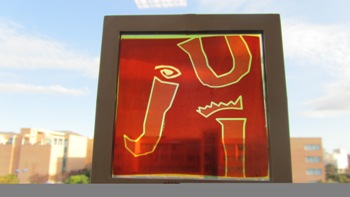The Photovoltaic and Optoelectronic Devices Group at the Universitat Jaume I (UJI) in Spain has developed dye-sensitized solar cells. These cells are also called as dye solar cells (DSC).
 Researchers at UJI Develop Dye-Sensitized Solar Cells
Researchers at UJI Develop Dye-Sensitized Solar Cells
A layer of titanium dioxide nanoparticles that is around 10-300 nm is used for forming dye solar cells (DSC). Titanium dioxide is a non-toxic element that is abundantly available in nature. Using the process of screen printing, titanium dioxide is deposited on a conductive glass. It is then calcined at a temperature of 450°C. This is followed by cooling and then immersion for a period of 16 to 24 h in a dye solution. This product is then sealed with another conductive glass with surlyn, which is a thermoplastic spacer. A platinum layer is then applied to the other conductive glass. A hole is made in the counter electrode and an electrolyte, the redox liquid, is introduced into the electrode by vacuum. It is then sealed.
When sunlight hits the dye solar cells, excitement of an electron at the HOMO level of the dye occurs at the LUMO level. The electron gets injected into the titanium nanoparticles because of a potential difference. The electron thus gets transported in the direction of the external electric circuit. This movement leads to generation of electricity.
This electron makes a re-entry into the device via the closed circuit and through the Pt counter electrode. The electron then gets transported to the electrolyte solution. A redox reaction occurs in the electrolyte solution and iodine regenerates the dye. As long as the device is kept under illumination this process keeps repeating infinitely.